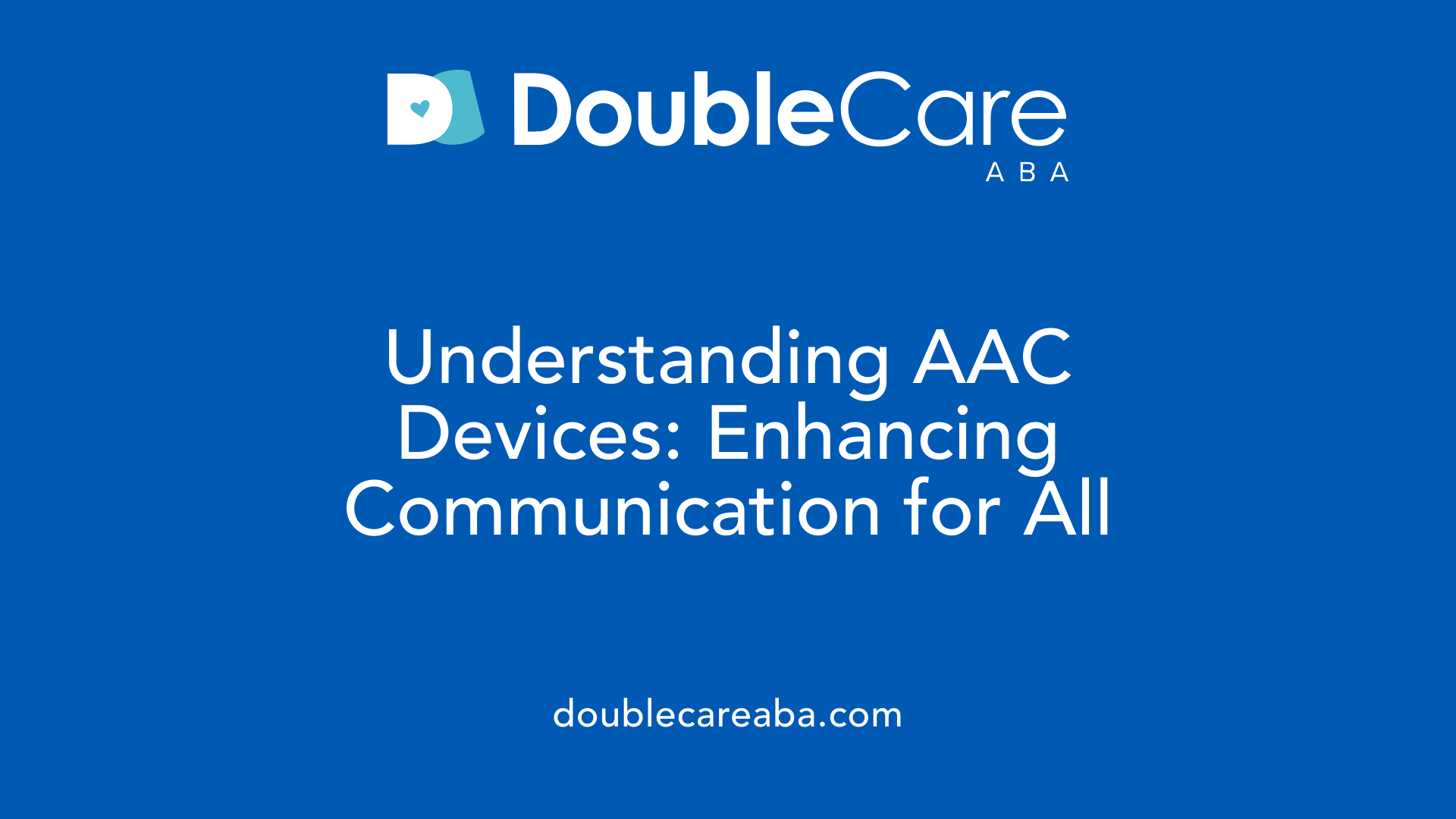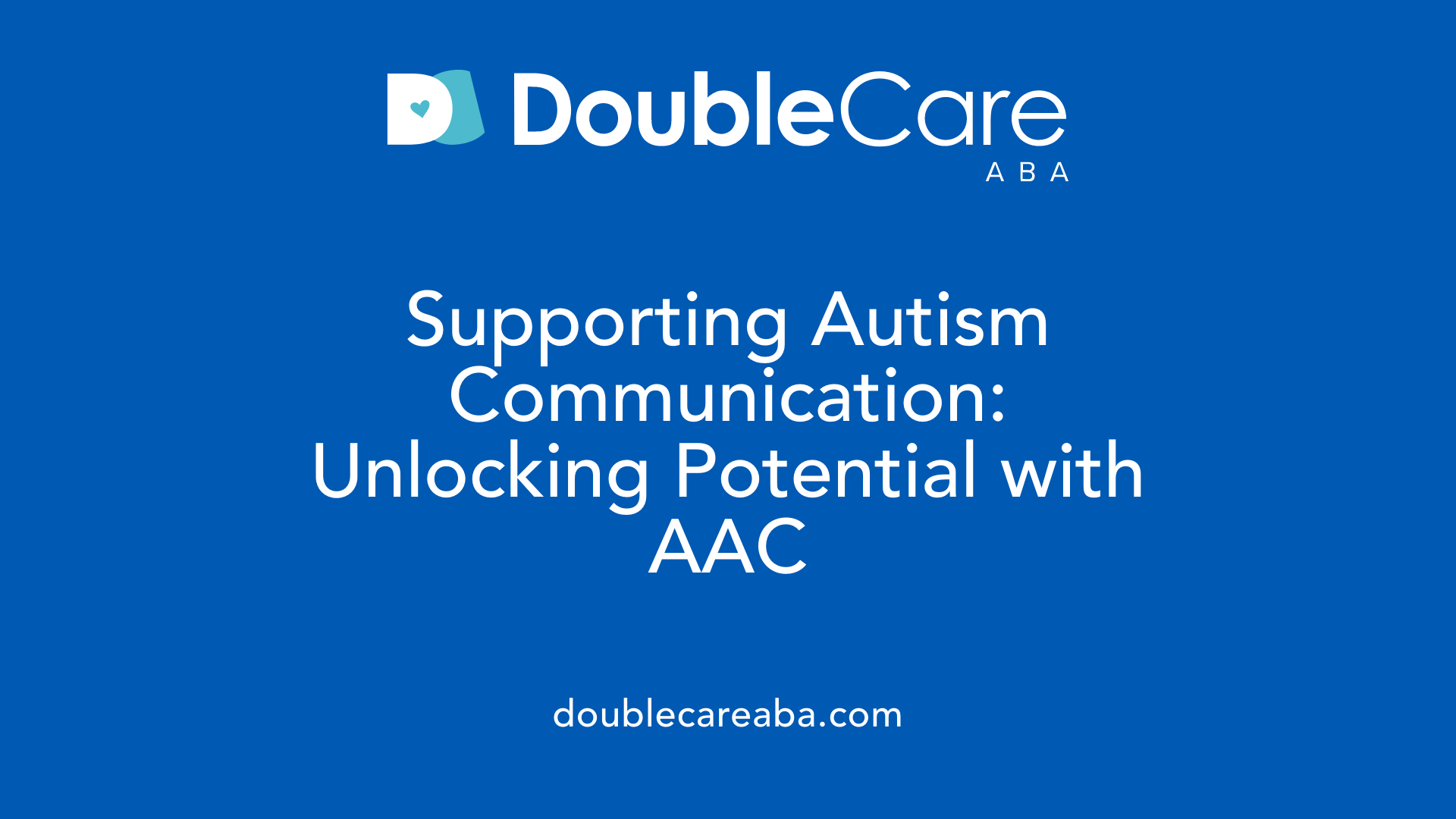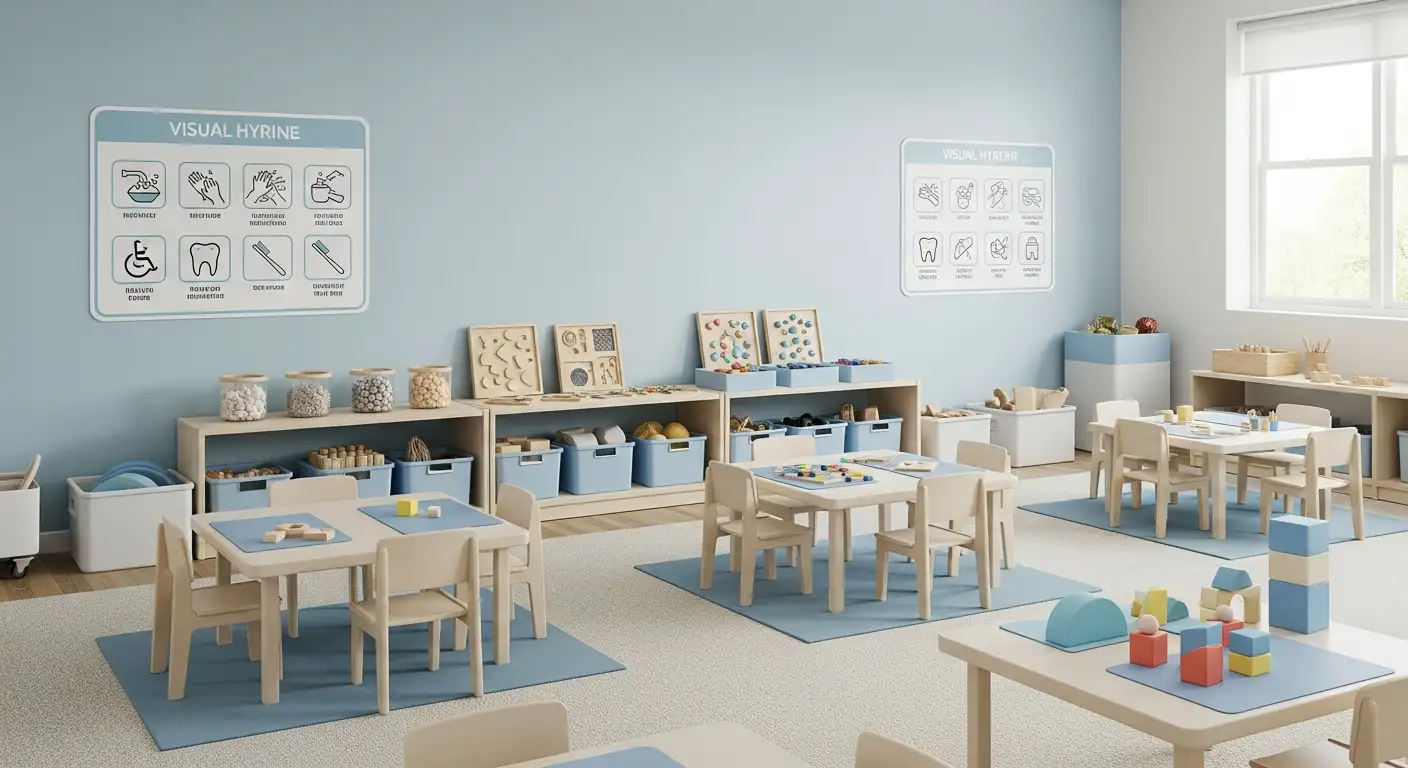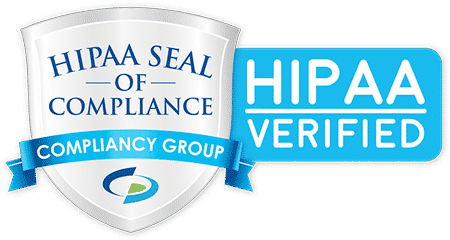What is an AAC Device for Autism?
Unlocking Communication: The Role of AAC Devices in Supporting Autism

Understanding AAC Devices and Their Importance for Autism
Augmentative and Alternative Communication (AAC) devices are vital tools designed to aid individuals with speech and language difficulties, particularly those with autism, by providing alternative ways to communicate. These devices help foster independence, improve social interactions, and enhance overall quality of life. This article explores what AAC devices are, how they support autistic individuals, the different types available, their benefits, their role in speech development, and available educational resources.
What is an AAC Device and Its Core Purpose

What is an AAC device and what is its purpose?
An AAC (Augmentative and Alternative Communication) device is a tool designed to help people with speech or language challenges communicate more effectively. These devices can be as simple as gestures, facial expressions, or picture boards, termed no-tech or low-tech options. They can also be advanced electronic tools, such as speech-generating apps on tablets or specialized hardware, known as high-tech devices.
AAC tools support communication through various means: images, written words, or speech output. They are used by children and adults with conditions like autism, speech delays, aphasia, or motor impairments. The goal of AAC devices is to enable users to express their needs, thoughts, and emotions clearly, fostering greater independence and social interaction.
Range of AAC tools from no-tech to high-tech
There is a broad spectrum of AAC options. No-tech methods include gestures, facial expressions, and pointing to pictures or written words. Low-tech tools involve picture communication boards, books, and cue cards that do not require electricity or batteries. High-tech devices typically involve electronic components, such as tablets equipped with speech and symbol apps, voice output devices, and customizable software. These vary in complexity, accessibility, and features like eye tracking or switch access.
Customizability and purpose of AAC devices
AAC tools are tailored to meet individual needs. They can be personalized with specific vocabulary, phrases, and social scripts to match the user’s preferences and daily routines. This customization helps reduce communication challenges and supports language development. Many AAC devices allow caregivers and therapists to model use, ensuring consistent and effective communication practices.
Through these devices, users can participate more fully in social, educational, and daily activities. They not only amplify speech but also complement verbal language, promoting rapid language growth. Overall, AAC devices are vital in helping individuals express themselves, connect with others, and gain greater independence, regardless of their age or communication ability.
Supporting Communication for Individuals with Autism

How do AAC devices support communication for individuals with autism?
AAC, or Augmentative and Alternative Communication, offers various ways for autistic individuals to communicate effectively when speech is limited or difficult. These tools include everything from simple gestures, facial expressions, and picture cards to advanced electronic devices like speech-generating tablets and apps.
AAC devices are tailored to meet each person's specific needs and abilities. For example, a device might incorporate picture symbols for a child who is still learning to speak or text-based options for an adult who prefers written communication. These systems are designed to be user-friendly and can be personalized with icons, phrases, or social scripts to help each individual express their thoughts, wishes, and feelings.
Research shows that AAC doesn't prevent speech development. Instead, it supports language growth by providing alternative means of communication, which often leads to improvements in both receptive understanding and expressive speech. When used consistently across different settings, AAC tools can help reduce frustration, as individuals can more easily express themselves.
Furthermore, AAC fosters social inclusion by enabling individuals to better participate in conversations and social activities. It also helps promote independence, as users gain more control over their interactions and daily routines. For autistic adults and children, AAC tools like symbol-based apps or speech-generating devices serve as empowering resources that respect their communication styles and preferences.
In summary, AAC plays a vital role in supporting communication for people with autism by offering adaptable, accessible tools that bridge gaps in speech and language, helping improve overall quality of life and social connections.
Varieties and Key Features of AAC Devices

What are the different types and features of AAC devices?
AAC devices cover a broad spectrum, tailored to meet individual communication needs. They include simple, no-tech options like gestures, facial expressions, and pointing to pictures or written words. These are often used in everyday interactions, especially by very young children or those with limited mobility.
Moving to low-tech tools, communication boards, picture books, and symbol cards serve as versatile aids. They are usually paper-based, easy to customize, and useful in various settings.
High-tech AAC devices are electronic and offer more advanced features. These include speech-generating devices (SGDs), software applications installed on tablets or smartphones, and eye gaze or switch-activated systems. These devices vary in complexity—from digitized speech systems that store pre-recorded messages, to sophisticated synthesized voice systems that allow message formulation.
Features such as customizable vocabulary enable users and caregivers to tailor the device content to the individual's daily needs and context. Display types include static screens, with fixed images, or dynamic displays, which can change content based on the user's choices.
Portability is an important feature, with many AAC devices designed to be lightweight and easy to carry. Accessibility options like head tracking, switch scanning, or eye gaze technology support users with limited motor control.
Selecting the right device involves comprehensive assessment by speech and occupational therapists. This ensures the device's features, access methods, and vocabulary suit the person's physical abilities, cognitive level, and communication goals.
Overall, AAC devices aim to foster effective communication and independence, enabling users of all ages to connect, express, and participate fully in daily activities.
Advantages of Using AAC Devices for Autistic Individuals

What are the benefits of using AAC devices for people with autism?
Augmentative and Alternative Communication (AAC) devices provide significant benefits for autistic individuals by enhancing their ability to communicate effectively. These tools support improved social skills by enabling users to express their thoughts, needs, and emotions clearly, fostering better connections with family, friends, and peers.
AAC devices come in various forms, from simple picture boards to advanced electronic apps like Proloquo2Go or Tobii Dynavox. They help individuals with unclear speech or no speech at all to share their message reliably. This can include touching icons, using eye gaze technology, or switching devices designed for motor challenges.
Using AAC encourages greater independence, allowing users to participate more fully in daily activities, educational settings, and social interactions. For example, children can ask for what they need, make choices, or comment on their experiences, promoting active engagement.
Another crucial benefit is the reduction in frustration and behavioral issues. When individuals cannot communicate their needs, they often become upset or act out. AAC reduces this frustration by giving them an effective means of expression.
Overall, AAC devices help develop language skills, support social participation, and give a voice to those who might otherwise be unheard. They promote a sense of belonging and understanding, improving quality of life for many autistic individuals.
Facilitation of Speech and Language Development
How are AAC devices used in aiding speech and language development in autistic individuals?
Augmentative and Alternative Communication (AAC) devices play an important role in supporting speech and language development among autistic individuals. These tools offer a reliable way for them to communicate, especially when verbal speech is limited or developing slowly.
AAC encompasses a range of options including picture exchange systems like PECS, electronic speech-generating devices (SGDs), and user-friendly apps like Proloquo2Go. These devices can be personalized with icons, words, or phrases to match each individual's motor skills and preferences.
Research shows that using AAC can lead to meaningful vocabulary growth and assist in learning how to combine words into sentences. It also helps improve both receptive language (understanding) and expressive language (speaking or pointing), often laying a foundation that supports the development of speech.
Additionally, AAC provides sensory feedback and assures consistency across different environments, which encourages spontaneous and independent communication.
Importantly, studies demonstrate that AAC does not hinder speech development; instead, it can enhance overall language skills. It acts as a supplement to spoken language and can even motivate children to attempt verbal communication as they progress.
By giving autistic individuals reliable ways to express themselves, AAC empowers them to participate actively in social, educational, and daily activities. The versatility of AAC tools means they can be adapted to different needs, supporting growth at every stage of development.
Educational Resources and Support for AAC Technology
What educational resources are available about assistive technology related to AAC?
A wide array of educational resources exists to help parents, educators, and professionals better understand and implement augmentative and alternative communication (AAC) systems. One prominent source is the NYC Public Schools website, which offers detailed support materials—including user guides, manuals, and training modules—covering a range of AAC devices and apps such as Proloquo2Go, Touch Chat, LAMP Words for Life, and TD Snap.
In addition to government and school district resources, professional organizations like the United States Society for Augmentative and Alternative Communication (USSAAC) provide valuable information, advocacy opportunities, and updates on device development. These organizations support ongoing learning and provide guidelines on best practices.
Online courses and e-learning modules play a significant role in parent, caregiver, and professional education. They cover essential topics such as understanding different AAC systems, troubleshooting technical issues, and advocating for individuals who need AAC tools.
Specialized training often emphasizes communication strategies tailored to various abilities, including legal considerations and ways to adapt AAC use in different settings. This ensures that users receive personalized support designed to enhance their communication effectiveness.
By accessing credible sources like these, caregivers and educators can stay informed on advances in AAC technology and participate actively in the development of communication skills for individuals with speech and language challenges.
| Resource Type | Description | Examples |
|---|---|---|
| Support Materials | Guides, manuals, and training modules | NYC Public Schools materials for Proloquo2Go, Touch Chat, etc. |
| Professional Organizations | Advocacy, research, and development resources | USSAAC, Augmentative Communication, Inc. |
| Online Courses | Webinars and e-learning modules | Communication strategies, troubleshooting, legal guidelines |
| Parent and Teacher Training | Customized strategies for use in daily life | Local training centers, virtual workshops |
Enhancing knowledge through these resources promotes effective integration of AAC technology, leading to improved communication outcomes for users of all ages.
Empowering Communicators: The Future of AAC in Autism Support
As technology advances and awareness grows, AAC devices become increasingly integral in supporting individuals with autism. These tools not only bridge communication gaps but also foster independence, social inclusion, and personal growth. Professionals, families, and educators are encouraged to explore personalized AAC solutions and leverage educational resources to optimize communication outcomes. The ongoing development and accessibility of assistive technology promise a brighter, more inclusive future where every individual’s voice can be heard and understood.
















